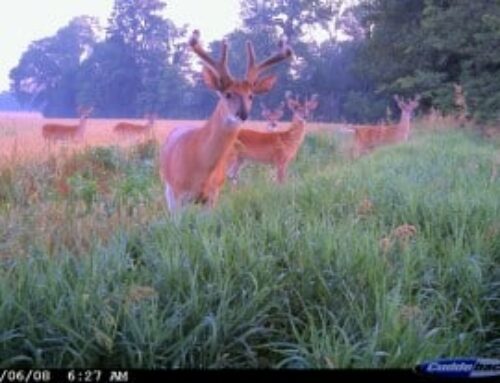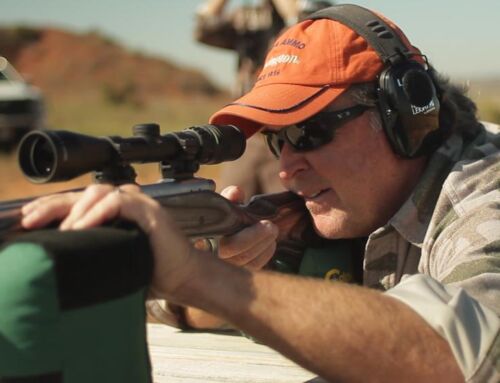 Not temperature-wise, but when a spot is “buck hot.”
Not temperature-wise, but when a spot is “buck hot.”
One afternoon a buddy drilled a 10-pointer with his bow from a lock-on near an alfalfa field. I drove our ATV over at dusk, and we looked around for 30 minutes. I was supposed to be looking for blood splatter, but I got big-eyed with all the trails and fresh shiny rubs (20 that I could see) in the grassy funnel between the bedding timber and the grain.
Steve hollered, “Here he is!” We weren’t quiet as we dragged his 10-pointer, loaded it, and rattled off across the field.
The next afternoon I stood in the same tree stand and drew an arrow on the third buck that slipped out of the bedding timber and tipped through the grass to me. The deer ran and fell about 30 yards from where my friend’s deer had expired, and I was happy.
The experts preach that after you or a buddy kill a buck, you ought to rest that stand for a few days or a week; let the woods and the deer settle down before hunting there again. Hmm, I believe I wrote that once or twice over the years!
But sometimes, especially in the early bow season when bucks are still nailed to a bed-to-feed pattern, it pays to go back to a hot tree stand as soon as you can. The deer are moving there for a reason—the feed or acorns are just right, one of the first does smells right, whatever. Bucks will often give you a second or even a third chance before your intrusion moves them to change their pattern and timing.
The key: There’s got to be a lot of deer sign in the area, and it’s got to be fresh and hot. There’s got to be a powerful draw that brings multiple deer and bucks past that stand for a few more days or a week.





